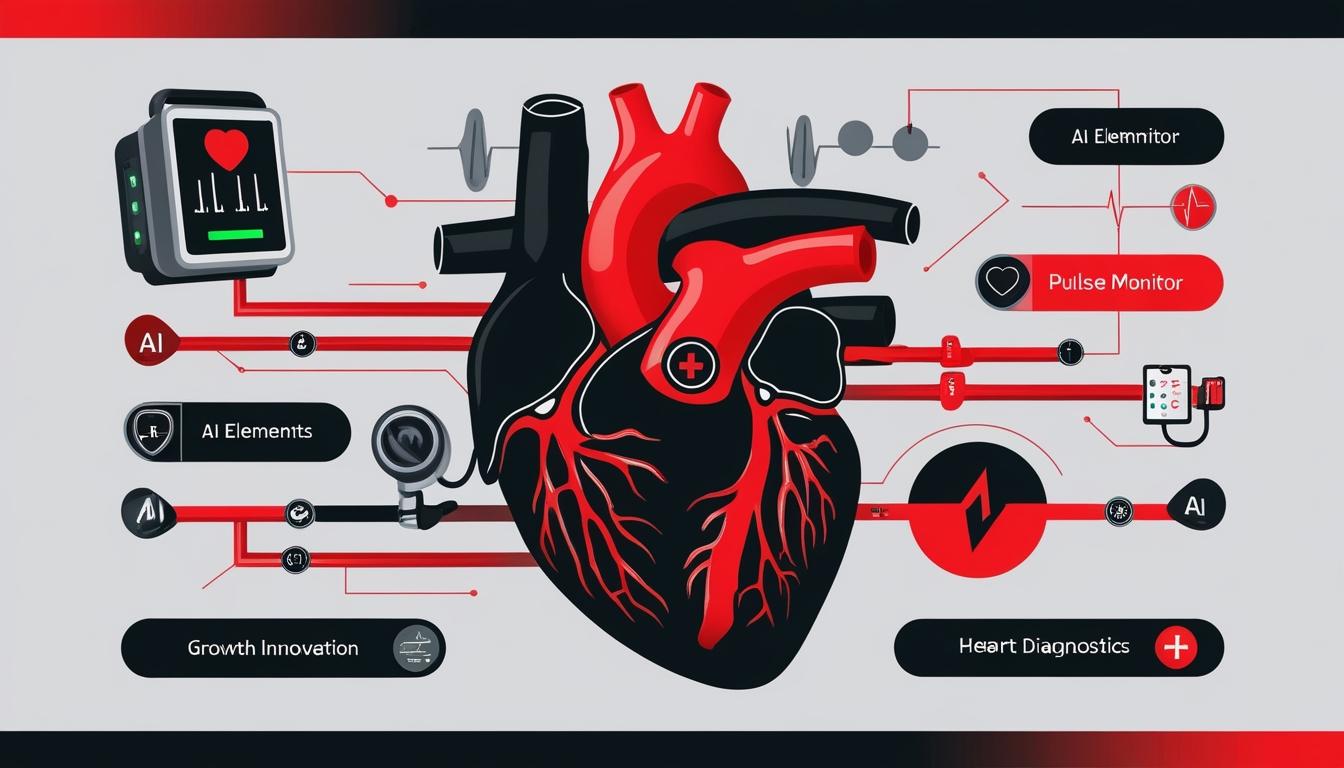A recent report published by ResearchAndMarkets.com reveals significant trends and anticipated growth in the heart attack diagnostics and food robotics markets. The comprehensive analyses provide insights into current and future developments in these sectors.
The global heart attack diagnostics market is projected to grow from an estimated USD 11.68 billion in 2024 to USD 27.95 billion by 2035, representing a compound annual growth rate (CAGR) of 8.26% during the forecast period from 2025 to 2035. Factors contributing to this growth include rising incidences of cardiovascular diseases (CVDs), advancements in technology, increased healthcare awareness, as well as government funding and initiatives aimed at improving healthcare infrastructure. A wide increase in diagnostic centers and laboratories is also expected to enhance accessibility and speed of diagnosis.
Ongoing innovations in diagnostic technologies are key to this market's expansion. These technologies include high-sensitivity troponin tests and artificial intelligence (AI)-powered diagnostic tools that enhance both the accuracy and speed of heart attack diagnoses. Notably, advancements such as the Caption AI introduced by GE Healthcare in April 2024 can assist a broader range of clinicians in capturing high-quality cardiac images, thus improving early detection capabilities.
In 2024, non-invasive tests accounted for the largest revenue-generating segment within the heart attack diagnostics market, driven by a shift towards safer, more accessible, and patient-friendly options. Minimal invasive procedures are anticipated to grow at a faster rate, stimulated by the demand for quicker recovery times and lower costs associated with traditional surgical methods. The electrocardiogram (ECG) segment is projected to retain its status as the primary revenue contributor, attributed to the low cost and high reliability of this method for diagnosing heart conditions.
By end-user, hospitals and clinics are expected to continue leading in revenue generation, thanks to their advanced diagnostic facilities and skilled workforce. Additionally, the ambulatory surgical centers segment is forecasted to experience rapid growth, reflecting a trend toward outpatient care and cost-effective treatments.
Geographically, North America is anticipated to secure the largest market share, driven by high cardiovascular disease prevalence and significant healthcare spending. Meanwhile, the Asia-Pacific region is predicted to exhibit the most rapid growth due to a combination of improving healthcare infrastructure, increasing awareness of heart health, and rising healthcare expenditures in countries such as China and India.
In a separate report, the food robotics market is positioned for robust growth, with forecasts indicating an increase from USD 2.63 billion in 2023 to USD 6.08 billion by 2032, reflecting a CAGR of 9.70% from 2024 through 2032. The demand for automation in food manufacturing is a significant driver, as companies strive to enhance production efficiency amid rising consumer preference for processed food products.
The implementation of robotics in food production addresses the dual challenges of labour-related issues and the need for improved food safety and quality. Automation reduces human error while allowing for increased precision in food production processes. Advanced robotics are now capable of performing complex tasks, including sorting, picking, and packaging food items, thereby streamlining operations across various stages of the food supply chain.
Technological innovations such as artificial intelligence and machine learning are pivotal in advancing the capabilities of food robotics systems. Moreover, the integration of robotics with other technologies like the Internet of Things (IoT) and big data analytics is enhancing operational efficiency and enabling predictive maintenance.
Despite the benefits, the adoption of robotics in the food industry faces challenges, notably high initial costs and the complexities of integrating new technologies within existing processes. Nevertheless, as technology becomes more accessible, broader implementation across the food manufacturing sector is anticipated.
As both the heart attack diagnostics and food robotics markets evolve, they present significant opportunities for innovation and investment, addressing critical needs in healthcare and food production.
Source: Noah Wire Services
